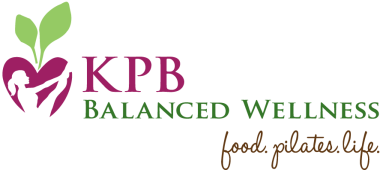One of the core foundations for everyone’s health lies in the health of your gut. In particular, your microbiome. Did you know that your body has roughly an equal amount of bacterial cells as it does human cells? (According to this recent research.)
That means, we need to focus on the health of those bacterial cells just as much as our human cells. In fact, these microorganisms may predict our health far more than anything our DNA says. This is where I find great comfort. Why? There is so much we can do to support a healthy microbiome.
A healthy microbiome can have these benefits:
- A Strong Immune System
- Healthy Hormones
- Healthy Digestion, no Leaky Gut
- Happier Moods
- Better Blood Sugar Handling and Protection from Diabetes
- Less Inflammation
- Healthy, Glowing Skin
- Improved Elimination
- Weight Loss
- Increased Calcium Absorption for Better Bone Density
- Better Energy
There literally isn’t an area of the body that isn’t impacted by a healthy microbiome.
Probiotics
Yep, that’s me at the dinner table putting cultured veggies on the kids’ plates. They know they have to take at least one bite and most days, they are happy to have them. This is a habit I want them in. It not only gives them a sour taste that is so important in stimulating digestion (and a taste completely missing from the Standard American Diet), but it also helps feed that microbiome with some beneficial bacteria.
Eating a diet rich in probiotic foods is an easy way to support your microbiome. Today, there are so many options on the market that make this super simple. You could easily pick up some saurerkraut (our favorite brand is by Farmhouse Culture), cultured veggies Kombucha, Kevita, gut shots, or beet kvass from your local grocery store.
Many think of yogurt as being a great source of probiotics, but it is not my go to resource. Most yogurts are low-fat or worse, non-fat which means they require serious amounts of sugar and preservatives to keep them relatively palatable and shelf-stable. The amount of probiotic benefit from most store-bought yogurts is debatable.
In addition to eating probiotic foods, I also take a probiotic supplement. However, most on the market do very little for you. (Other than maybe help stimulate a bowel movement, and we shouldn’t discount that!) I rotate between spore-based probiotics, soil-based probiotics and from time to time I’ll use a single strain depending on what is going on. When starting on any of these, I recommend you start low and go slow to avoid any potential die-off effects. I like to consider taking a probiotic as a huge insurance policy.
The key to probiotics is making sure you are taking a high-quality one. And I’ll be honest, it can be hard to determine. But, one fail-safe way to know if your probiotic is worth anything is to note if it needs to be refrigerated. If it does, ask how it will survive in your gut at 98.6 degrees….
Prebiotics
Probiotics are something most of us have at least heard of, but prebiotics, may be a new term. Prebiotics are the substrates that benefit the host microorganisms; they are essentially the food for the microbes that keep us healthy. Think of them as the fertilizer to ensure your good bacteria grow and multiply! Any time you take probiotic supplements or eat probiotic foods, you are really only adding a drop to the bucket. It is essential to feed those good gut bugs with some prebiotic foods to ensure you grow a thriving garden.
The magic of your healthy gut microbiome is in the PREbiotics.
The bacteria in your gut not only eat the prebiotic fibers to help them grow and thrive, they also turn it into butyrate. This is a short-chain fatty acid that has anti-inflammatory effects inside the colon, supports the growth and multiplication of healthy cells and blocks the growth of cancerous cells. This is a very good thing.
Now comes the fun part, because the best way to get your prebiotics in is to EAT them! Yay!
Where do we find prebiotics? Prebiotics are in the soluble fibers of your food and the colors of your food. Many vegetables such as leeks, onions, radishes, artichokes and Jerusalem artichokes have prebiotics. Roots such as chicory, burdock, yams and beets are also great prebiotics. Certain spices in your meals such as ginger, turmeric and cumin also offer prebiotics. One of my all-time favorite prebiotic foods? Plaintains. Seriously, I may have an addiction with plantain chips. All in the name of good gut health, right? (And we had some amazing plantain dishes in Puerto Rico!!)
Raw honey also offers some prebiotics and the polyphenols in your olive oil do too.
The soluble fiber in flax and chia seeds when freshly ground offer great prebiotics, as does the resistant starch of potato starch or cooked and cooled potatoes. (A reason to enjoy a well-made potato salad this summer! Make it with purple or red potatoes to really up the antioxidant and prebiotic content.) Note, that hot potatoes do not offer any prebiotic benefit.
Challenge yourself over the coming week to get in at least one prebiotic food each day. And like you thrive on a diverse diet, so does your microbiome. The more variety you eat in prebiotic foods, the stronger and more robust your microbiome will be.



